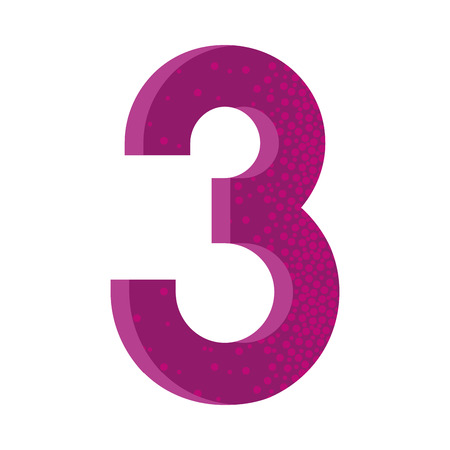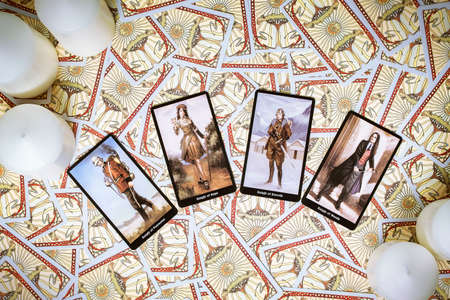Introduction to British Tarot Culture
Tarot, with its enigmatic symbolism and evocative imagery, has woven itself into the cultural tapestry of Britain in a manner both subtle and profound. While tarot cards originated on the European continent, their migration to Britain during the late 18th and 19th centuries marked the beginning of a distinctively British approach to the art and practice of tarot. Historically, tarot found its place amidst the burgeoning Victorian fascination with mysticism, spiritualism, and secret societies, becoming not only a tool for divination but also a canvas for artistic expression. Over time, British society has witnessed tarots evolution from an esoteric pastime reserved for occult enthusiasts to a widely recognised medium for introspection, creativity, and even psychological exploration. In contemporary Britain, tarot is no longer confined to shadowy parlours or exclusive circles; it enjoys mainstream relevance as both a personal guide and a vibrant form of artistic heritage. This unique melding of history, artistry, and cultural adaptation sets the stage for understanding how British tarot decks have come to reflect not just mystical traditions but also the creative spirit of their makers.
2. Distinctive Characteristics of British Tarot Design
When examining the artistry of British tarot decks, it becomes clear that they stand apart from their international counterparts through a unique blend of stylistic elements, motifs, and iconography rooted in the cultural and artistic traditions of the United Kingdom. This distinctiveness is not merely aesthetic; it is deeply interwoven with British history, folklore, and design sensibilities.
Stylistic Elements: From Watercolours to Woodcuts
British tarot decks often display a penchant for fine detail and subtlety. Many illustrators opt for watercolour washes or ink drawings reminiscent of classic British book illustration. The emphasis on hand-drawn lines and organic textures reflects a broader tradition in British visual arts—where the artisanal and the whimsical meet with understated elegance. In contrast, decks from other regions may favour bolder colours or digitally rendered graphics, which can sometimes lack the tactile intimacy found in British work.
Motifs Rooted in Heritage
The motifs featured in British tarot decks frequently draw upon local folklore, mediaeval manuscripts, Arthurian legends, and even pre-Raphaelite art. The following table highlights some typical motifs and their cultural references:
| Motif | Cultural Reference |
|---|---|
| Green Man | Pagan symbolism; British woodland mythology |
| Arthurian Figures | Legends of King Arthur; national literary heritage |
| Morris Dancers | Traditional English folk celebrations |
| Celtic Knots | Ancient Celtic art; regional identity (Wales, Scotland) |
This careful integration of heritage ensures each card resonates with layers of meaning familiar to those steeped in British culture.
Iconography: Subtle Symbolism and Local Colour
The iconography within British tarot decks tends to lean towards subtlety and layered symbolism rather than overt displays. For example, rather than using dramatic celestial imagery, a British deck might feature a faintly glowing lantern or misty moorland as a metaphor for guidance and introspection. Commonplace objects—such as teacups, foxes, or hedgerows—take on mystical qualities through context and placement, reflecting an appreciation for everyday magic found within local landscapes.
Comparison with International Decks
| Feature | British Decks | International Decks |
|---|---|---|
| Art Style | Watercolour, pen-and-ink, hand-drawn details | Bolder colours, digital techniques common |
| Main Motifs | Local folklore, Arthurian legends, rural scenes | Universal archetypes, esoteric symbols |
| Symbolism Approach | Subtle, layered references to local culture | Direct, often globalised iconography |
A Living Tradition
The distinctive characteristics of British tarot design reveal a living tradition that embraces both historic roots and contemporary interpretation. These decks are not simply tools for divination—they are repositories of cultural memory and artistry that invite users into a uniquely British narrative world.

3. Pioneering British Tarot Illustrators
At the heart of the British tarot tradition lies a lineage of visionary illustrators whose artistry has defined and redefined the visual language of tarot decks. Perhaps most famously, Pamela Colman Smith—affectionately known as “Pixie”—crafted the iconic images of the Rider-Waite-Smith deck in 1909. Under the direction of Arthur Edward Waite, Smith’s evocative illustrations revolutionised tarot by bringing narrative depth and symbolism to each card, setting a new standard for decks worldwide.
Beyond Smith, British artists such as Fergus Hall contributed to the legacy with his Surrealist approach in the James Bond Tarot, featured in “Live and Let Die”. More recently, illustrators like Liz Dean and Emma Garner have infused contemporary sensibilities into their designs, blending traditional symbolism with distinctly modern aesthetics. Their works often reflect themes rooted in British folklore, nature, and mysticism, resonating strongly with local cultural identity.
The contributions of these illustrators extend beyond mere decoration—they have shaped how generations interpret and interact with tarot. By weaving together personal vision and collective heritage, pioneering British artists ensure that each deck is not only a tool for divination but also a vibrant piece of art history.
4. Iconic British Tarot Decks Through the Ages
The United Kingdom has long been a crucible for tarot innovation, blending tradition with artistic experimentation. From mystical Victorian parlours to contemporary living rooms, British tarot decks have evolved in style and substance, reflecting shifts in culture and spirituality. Below, we explore some of the most celebrated and culturally significant tarot decks created in Britain, charting their unique contributions to the artistry of tarot.
Historic Foundations: Pioneering British Decks
| Deck Name | Year Released | Creator(s) | Significance |
|---|---|---|---|
| Rider-Waite-Smith Tarot | 1909 | A.E. Waite & Pamela Colman Smith | Revolutionised tarot imagery; foundational for modern decks worldwide. |
| The Thoth Tarot | 1943 (published posthumously 1969) | Aleister Crowley & Lady Frieda Harris | Psychedelic symbolism; bridges esoteric tradition with avant-garde art. |
The Rider-Waite-Smith Tarot, with its vivid illustrations by Pamela Colman Smith, set a new visual standard and remains the bedrock of most English-speaking tarot practice. In contrast, the Thoth Tarot’s intricate symbolism reflects the mystical explorations of its creators, drawing on both ancient wisdom and early twentieth-century modernism.
Modern Classics: Contemporary British Tarot Innovations
| Deck Name | Year Released | Creator(s) | Noteworthy Features |
|---|---|---|---|
| The Wildwood Tarot | 2011 | Mark Ryan & John Matthews (art by Will Worthington) | Celtic mythological themes; earthy, painterly aesthetic. |
| The DruidCraft Tarot | 2004 | Philip & Stephanie Carr-Gomm (art by Will Worthington) | Druidic and Wiccan influences; lush natural landscapes. |
| The Urban Tarot (UK Edition) | 2019 (UK release) | Robin Scott (UK publisher) | Modern city life; diverse and inclusive representation. |
The 21st century has witnessed a flourishing of British tarot artistry that both honours heritage and embraces inclusivity. The Wildwood Tarot reimagines archetypes through the lens of British folklore, while The DruidCraft Tarot infuses pagan traditions with gentle realism. More recent additions such as the UK edition of The Urban Tarot offer a distinctly metropolitan British perspective, reflecting today’s social diversity and urban experience.
Cultural Resonance and Enduring Legacy
Beneath these iconic decks lies an ongoing dialogue between past and present—a distinctly British approach that values both continuity and reinvention. Whether steeped in ancient legend or capturing the pulse of contemporary society, these decks continue to shape how tarot is perceived and practised across Britain and beyond.
5. The Cultural and Artistic Legacy of British Tarot
The influence of British tarot artistry extends far beyond the confines of card decks, permeating spiritual practices, pop culture, and contemporary design both within the UK and on a global stage. The distinctive visual language pioneered by British illustrators—marked by a blend of mysticism, symbolism, and narrative storytelling—has become a cornerstone in how tarot is experienced and interpreted.
Spiritual Practice: Shaping Modern Mysticism
Within spiritual communities across Britain, homegrown tarot decks are revered not only as divinatory tools but also as objects d’art that invite deeper self-reflection. The iconic Rider-Waite-Smith deck, for example, has shaped the ritualistic and psychological approach to tarot reading, influencing generations of practitioners. British decks often feature local folklore, nature symbolism, and historical references that resonate with seekers aiming to connect more intimately with their cultural roots.
Pop Culture Resonance
The aesthetic and thematic richness of British tarot has captured the imagination of artists, filmmakers, musicians, and writers worldwide. Classic imagery from these decks regularly appears in album artwork, fashion designs, television set pieces, and literature—often as shorthand for mystery or spiritual awakening. In the UK, references to tarot surface in everything from period dramas to avant-garde theatre productions, testifying to its integration into everyday culture.
Influence on Design Trends
The artistic legacy of British tarot is palpable in contemporary graphic design and illustration. Elements such as bold linework, gothic motifs, and intricate patterning have inspired everything from book covers to branding identities. Designers frequently draw upon the work of influential British tarot illustrators—like Pamela Colman Smith or Fergus Hall—for their timeless balance of tradition and innovation.
Global Reach
Perhaps most remarkably, the artistry of British tarot has found enthusiastic audiences worldwide. International publishers routinely reprint classic British decks and commission new works from UK-based artists. Workshops, exhibitions, and online communities centred around British tarot continue to thrive globally, highlighting an enduring appetite for this unique blend of esoteric art and narrative depth. Ultimately, the cultural and artistic legacy of British tarot endures as a dynamic force—shaping how we understand spirituality, creativity, and identity in an ever-changing world.
6. Collecting and Appreciating British Tarot Decks
For enthusiasts captivated by the artistry of British tarot decks, collecting is both a personal journey and a nod to cultural heritage. Whether you are drawn to iconic classics or modern interpretations, acquiring and curating these decks requires a blend of passion, discernment, and practical know-how.
Practical Advice for Beginners
Start with research: Familiarise yourself with influential British illustrators and publishing houses such as Rider & Co., Treadwell’s, or contemporary studios. Consider visiting local bookshops, metaphysical stores, and antique fairs—often treasure troves for unique finds. Engage with UK-based tarot communities online and in-person; these networks can offer tips on availability, authenticity, and current values.
Curating a Thoughtful Collection
Focus on decks that resonate with you aesthetically or historically. Document each deck’s origin, illustrator, and edition details—this builds a story around your collection and enhances its future value. Some collectors create themed subsets, such as Art Nouveau-inspired decks or those reflecting British folklore, which adds narrative depth.
Preserving Your Decks
The UK’s famously damp climate can challenge paper preservation. Store your tarot decks in acid-free boxes or sleeves, away from direct sunlight and humidity. Rotate displayed decks periodically to prevent fading, and handle cards with clean hands to minimise wear. For rare editions, consider consulting conservation specialists.
Building Community and Sharing Appreciation
The joy of collecting is amplified through sharing. Join local tarot meetups or workshops across Britain to swap insights and decks. Social media groups dedicated to British tarot art are excellent platforms for showcasing collections and learning from seasoned collectors.
Ultimately, curating British tarot decks is about more than acquisition—it’s an ongoing appreciation of the country’s artistic legacy and spiritual imagination. By approaching your collection thoughtfully and connecting with fellow enthusiasts, you contribute to keeping this rich tradition alive for generations to come.


